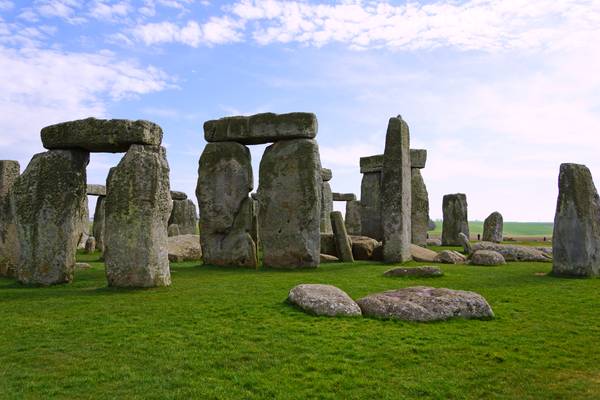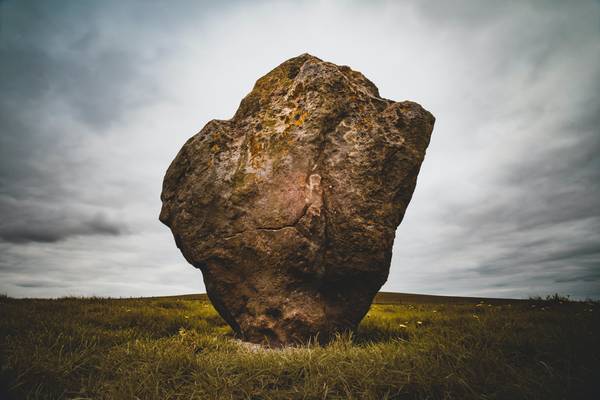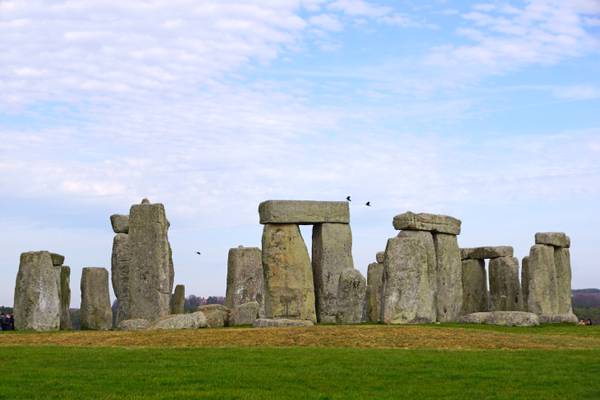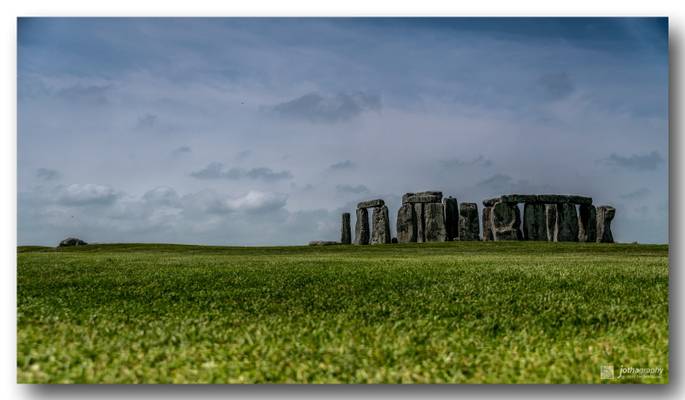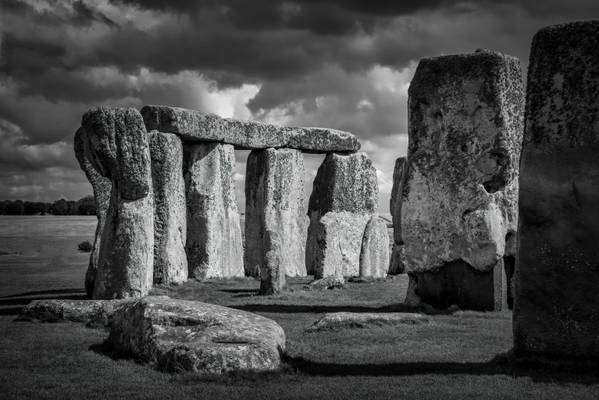
Stonehenge, Avebury and Associated Sites WHS

by Alan Taylor
Stonehenge is a prehistoric monument in Wiltshire, England, two miles (3 km) west of Amesbury. It consists of a ring of standing stones, with each standing stone around 13 feet (4.0 m) high, seven feet (2.1 m) wide and weighing around 25 tons. The stones are set within earthworks in the middle of the most dense complex of Neolithic and Bronze Age monuments in England, including several hundred burial mounds.
My website: Deep Mono Photography

by jim stephenw
Stonehenge is a prehistoric monument located in Wiltshire, England, about 2 miles west of Amesbury and 8 miles north of Salisbury. One of the most famous sites in the world, Stonehenge is the remains of a ring of standing stones set within earthworks. It is in the middle of the most dense complex of Neolithic and Bronze Age monuments in England, including several hundred burial mounds. Archaeologists believe it was constructed from 3000 BC to 2000 BC. The surrounding circular earth bank and ditch, which constitute the earliest phase of the monument, have been dated to about 3100 BC. Radiocarbon dating in 2008 suggested that the first bluestones were raised between 2400 and 2200 BC. Another theory suggests the bluestones may have been raised at the site as early as 3000 BC. The site and its surroundings were added to the UNESCO's list of World Heritage Sites in 1986 in a co-listing with Avebury Henge. It is a national legally protected Scheduled Ancient Monument. Stonehenge is owned by the Crown and managed by English Heritage, while the surrounding land is owned by the National Trust. Archaeological evidence found by the Stonehenge Riverside Project in 2008 indicates that Stonehenge could have been a burial ground from its earliest beginnings. The dating of cremated remains indicate that deposits contain human bone from as early as 3000 BC, when the ditch and bank were first dug. Such deposits continued at Stonehenge for at least another 500 years. Information from Wikipedia.
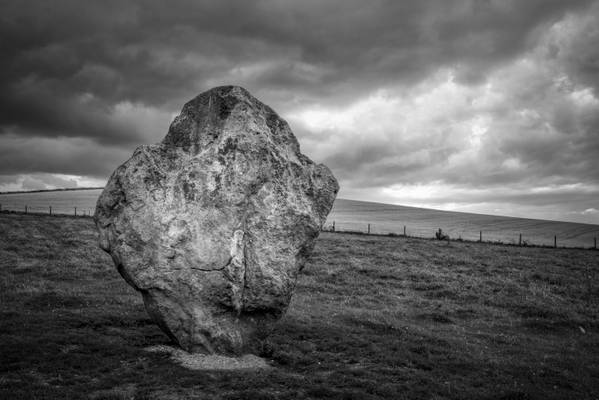
by Alan Taylor
One of the megaliths, or 'standing stones', that forms the West Kennet Avenue that approaches the stone circles at Avebury, Wiltshire.
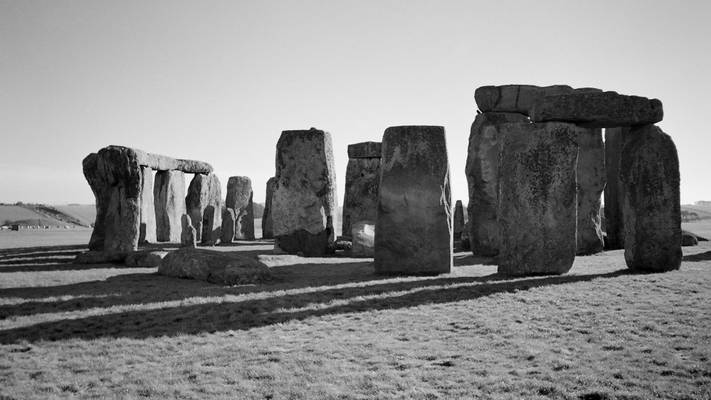
by Rob Oo
Stonehenge, Salisbury, UK.
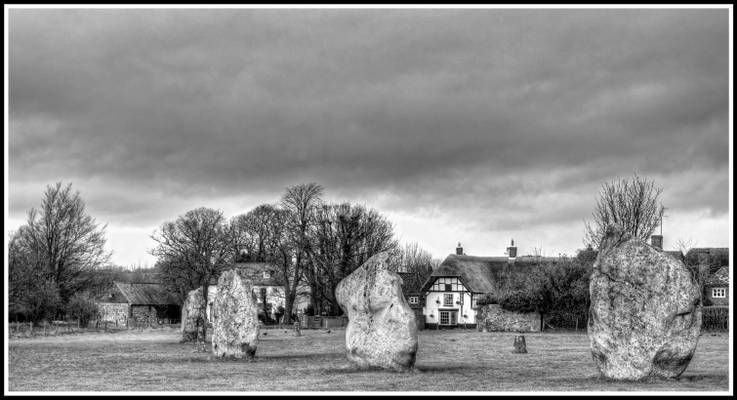
by jim stephenw
Avebury is a Neolithic henge monument containing three stone circles, around the village of Avebury in Wiltshire, in south-west England. One of the best known prehistoric sites in Britain, it contains the largest stone circle in Europe. It is both a tourist attraction and a place of religious importance to contemporary Pagans. Constructed around 2600 BC, during the Neolithic, or 'New Stone Age', the monument comprises a large henge (a bank and a ditch) with a large outer stone circle and two separate smaller stone circles situated inside the centre of the monument. Its original purpose is unknown, although archaeologists believe that it was most likely used for some form of ritual or ceremony. The Avebury monument was a part of a larger prehistoric landscape containing several older monuments nearby, including West Kennet Long Barrow and Silbury Hill. By the Iron Age, the site had been effectively abandoned, with some evidence of human activity on the site during the Roman occupation. During the Early Middle Ages, a village first began to be built around the monument, which eventually extended into it. In the Late Medieval and Early Modern periods, locals destroyed many of the standing stones around the henge, both for religious and practical reasons. The antiquarians John Aubrey and William Stukeley however took an interest in Avebury during the 17th century, and recorded much of the site before its destruction. Archaeological investigation followed in the 20th century, led primarily by Alexander Keiller, who oversaw a project of reconstructing much of the monument. Avebury is owned and managed by the National Trust, a charitable organisation who keep it open to the public. It has been designated a Scheduled Ancient Monument, as well as a World Heritage Site, in the latter capacity being seen as a part of the wider prehistoric landscape of Wiltshire known as Stonehenge, Avebury and Associated Sites.
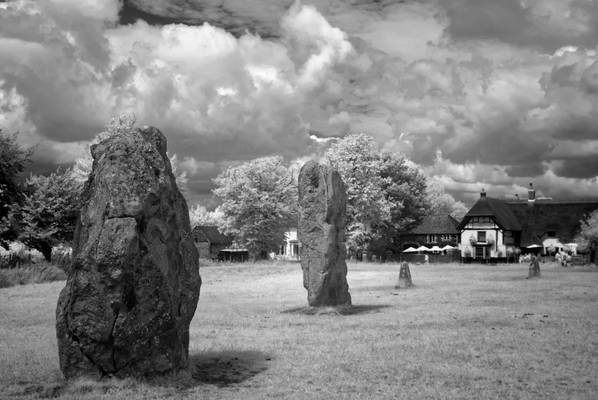
by jim stephenw
A few images created using Sony A100 camera converted for IR.
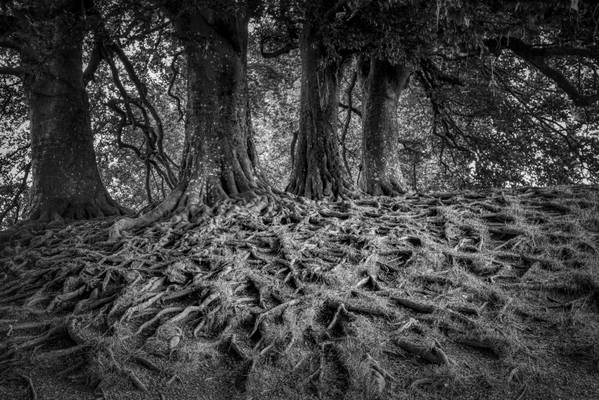
by Alan Taylor
Some very interesting roots in a copse on the outskirts of Avebury.
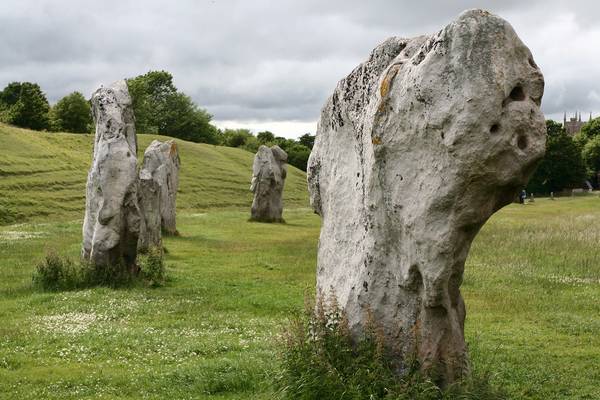
A view of some of the standing stones at Avebury. The one in the foreground looks to me like a huge bones which has been unsuccessfully burried by a...

by Giuseppe Milo
If you like my pictures please support me buying a print from my shop www.pixael.com/en/pictures thanks!
You can follow me on https://www.facebook.com/giuseppemilophoto https://twitter.com/pixael_com https://instagram.com/pixael/
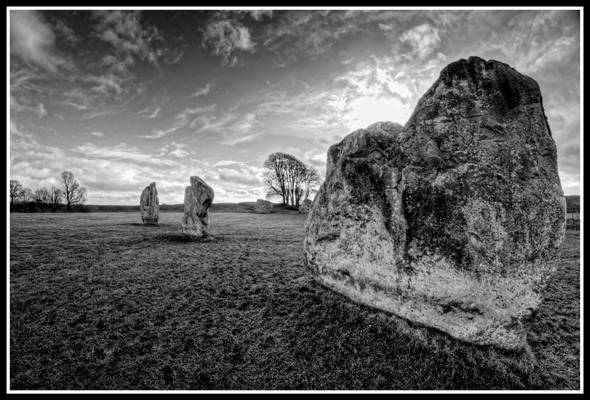
by jim stephenw
Avebury is a Neolithic henge monument containing three stone circles, around the village of Avebury in Wiltshire, in south-west England. One of the best known prehistoric sites in Britain, it contains the largest stone circle in Europe. It is both a tourist attraction and a place of religious importance to contemporary Pagans. Constructed around 2600 BC, during the Neolithic, or 'New Stone Age', the monument comprises a large henge (a bank and a ditch) with a large outer stone circle and two separate smaller stone circles situated inside the centre of the monument. Its original purpose is unknown, although archaeologists believe that it was most likely used for some form of ritual or ceremony. The Avebury monument was a part of a larger prehistoric landscape containing several older monuments nearby, including West Kennet Long Barrow and Silbury Hill. By the Iron Age, the site had been effectively abandoned, with some evidence of human activity on the site during the Roman occupation. During the Early Middle Ages, a village first began to be built around the monument, which eventually extended into it. In the Late Medieval and Early Modern periods, locals destroyed many of the standing stones around the henge, both for religious and practical reasons. The antiquarians John Aubrey and William Stukeley however took an interest in Avebury during the 17th century, and recorded much of the site before its destruction. Archaeological investigation followed in the 20th century, led primarily by Alexander Keiller, who oversaw a project of reconstructing much of the monument. Avebury is owned and managed by the National Trust, a charitable organisation who keep it open to the public. It has been designated a Scheduled Ancient Monument, as well as a World Heritage Site, in the latter capacity being seen as a part of the wider prehistoric landscape of Wiltshire known as Stonehenge, Avebury and Associated Sites.
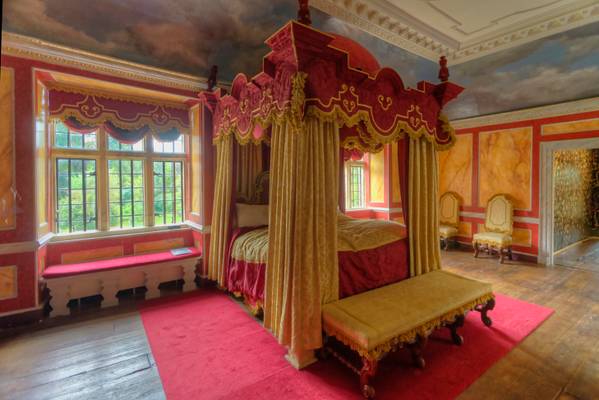
by jim stephenw
Some of the HDR photos taken inside the National Trust owned Avebury Manor. The house was begun in the mid-16th century, sometime between 1555-80. Excavations suggest that there was a much earlier monastery on the same site, dating as far back as 1000 years ago. We know there was a 12th century priory house nearby, owned by the Abbey of St Georges de Boucherville in Normandy. The Hundred Years War spelled the end of French monastic influence in England, and the last monk left in 1379. In 1411 the monastic lands passed to Fotheringhay College, but following the Dissolution of the Monasteries the College traded the estate for lands elsewhere. The crown took control, and granted the Avebury estates to Sir William Sharington of Lacock Abbey. The priory was destroyed, leaving only a small house on the site. A decade later the property was purchased by William Dunch, a wealthy courtier and Auditor for the Royal Mint. Sarsen stone was used for much of the original building, probably scavenged from the stone circle nearby. The house was extended in 1601 by Sir James and Mrs Debora Mervyn, whose initials are carved over the beautifully decorated porch. The Great Hall was remodelled in Georgian style by Richard Holford in 1740. This chamber eventually became the Queen Anne Bedroom. The final changes to the house came in the early years of the 20th century, when Lt-Colonel Leopold and Mrs Nora Jenner added a library and laid out the wonderful gardens, with yew and box topiary and water features. The manor was featured in the BBC television series 'The Manor Reborn', which followed restoration efforts as a team of experts helped return the house to its Tudor splendour. Nine rooms were restored, reflecting Tudor, Georgian, Queen Anne, Edwardian, and early 20th century periods. Visitors are encouraged to sit or lie on the furniture, dress up in period clothes and generally make themselves at home, which makes a refreshing change to the usual "hands off" approach to National Trust properties.
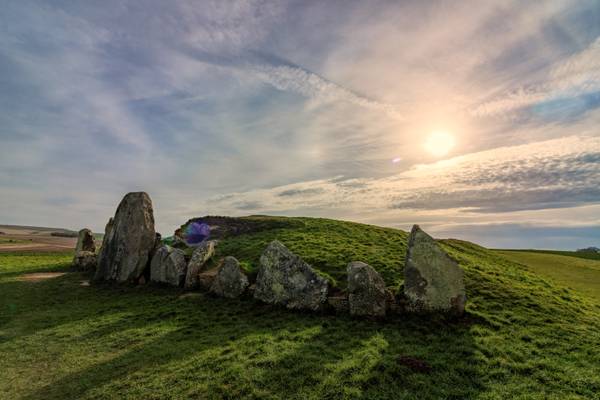
One of the largest, most impressive and accessible Neolithic chambered tombs in Britain. Built in around 3650 BC on a chalk ridge in what is now the...
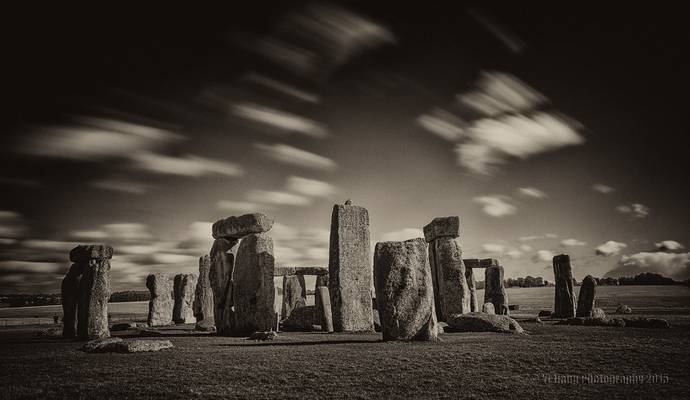
by Yi Jiang
Stonehenge, England
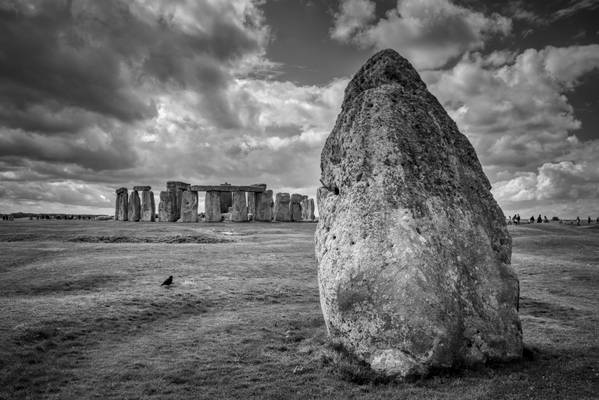
by Alan Taylor
The Heel Stone (or Hele/Heal Stone, sometimes also called "The Friar's Heel") is a natural stone that has not been worked or tooled. It lies about 250' away to the northeast from the centre of the stone circle; at the top of the Avenue, fractionally to the east of the main solstitial axis. www.stonesofstonehenge.org.uk
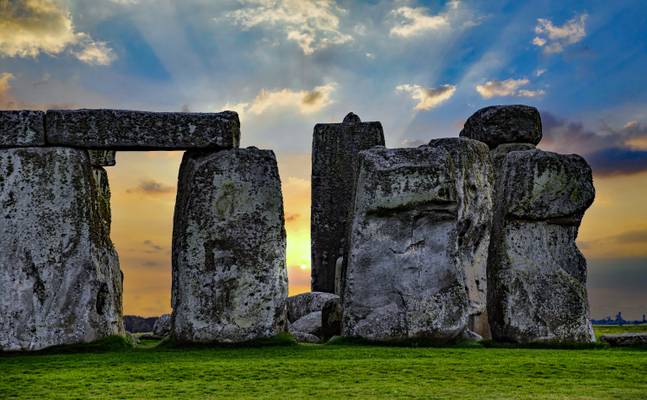
by Dominic Nessi
- Stonehenge is a prehistoric monument on Salisbury Plain in Wiltshire, England, two miles (3 km) west of Amesbury. It consists of an outer ring of vertical sarsen standing stones, each around 13 feet (4.0 m) high, seven feet (2.1 m) wide, and weighing around 25 tons, topped by connecting horizontal lintel stones.
Inside is a ring of smaller bluestones. Inside these are free-standing trilithons, two bulkier vertical Sarsens joined by one lintel. The whole monument, now ruinous, is orientated towards the sunrise on the summer solstice. The stones are set within earthworks in the middle of the most dense complex of Neolithic and Bronze Age monuments in England, including several hundred tumuli (burial mounds).
Archaeologists believe it was constructed from 3000 BC to 2000 BC. The surrounding circular earth bank and ditch, which constitute the earliest phase of the monument, have been dated to about 3100 BC.
Radiocarbon dating suggests that the first bluestones were raised between 2400 and 2200 BC, although they may have been at the site as early as 3000 BC.
Stonehenge is regarded as a British cultural icon. It has been a legally protected Scheduled Ancient Monument since 1882, when legislation to protect historic monuments was first successfully introduced in Britain. The site and its surroundings were added to UNESCO's list of World Heritage Sites in 1986.
Stonehenge could have been a burial ground from its earliest beginnings. Deposits containing human bone date from as early as 3000 BC, when the ditch and bank were first dug, and continued for at least another 500 years.
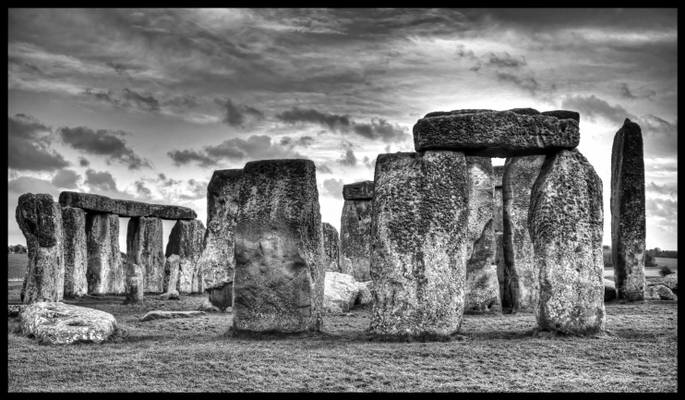
by jim stephenw
Stonehenge is a prehistoric monument located in Wiltshire, England, about 2 miles west of Amesbury and 8 miles north of Salisbury. One of the most famous sites in the world, Stonehenge is the remains of a ring of standing stones set within earthworks. It is in the middle of the most dense complex of Neolithic and Bronze Age monuments in England, including several hundred burial mounds. Archaeologists believe it was constructed from 3000 BC to 2000 BC. The surrounding circular earth bank and ditch, which constitute the earliest phase of the monument, have been dated to about 3100 BC. Radiocarbon dating in 2008 suggested that the first bluestones were raised between 2400 and 2200 BC. Another theory suggests the bluestones may have been raised at the site as early as 3000 BC. The site and its surroundings were added to the UNESCO's list of World Heritage Sites in 1986 in a co-listing with Avebury Henge. It is a national legally protected Scheduled Ancient Monument. Stonehenge is owned by the Crown and managed by English Heritage, while the surrounding land is owned by the National Trust. Archaeological evidence found by the Stonehenge Riverside Project in 2008 indicates that Stonehenge could have been a burial ground from its earliest beginnings. The dating of cremated remains indicate that deposits contain human bone from as early as 3000 BC, when the ditch and bank were first dug. Such deposits continued at Stonehenge for at least another 500 years. Information from Wikipedia.
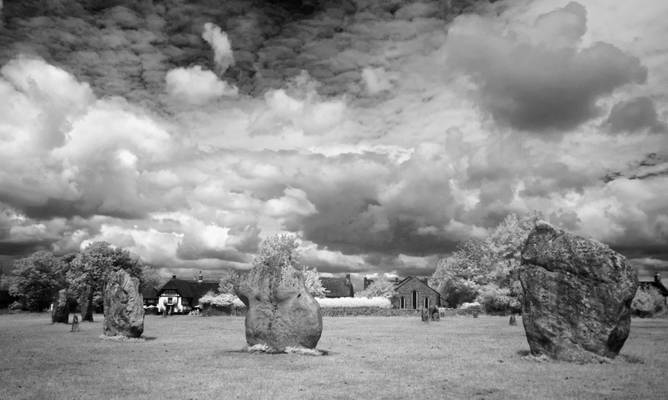
by jim stephenw
A few images created using Sony A100 camera converted for IR.

by Alan Taylor
An unusual Thatched Shed, spotted while strolling around the village of Avebury, Wiltshire.
Thanks to all Phoide contributors to Stonehenge, Avebury and Associated Sites WHS!
Most notably jim stephenw, Alan Taylor and Andrey Sulitskiy.
